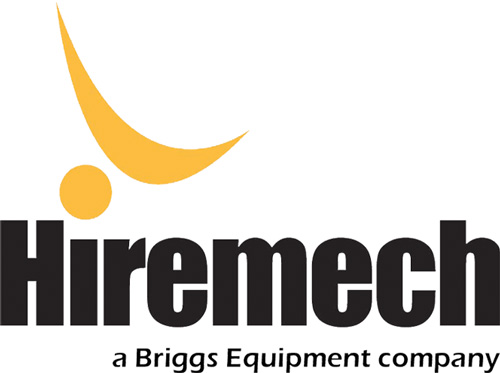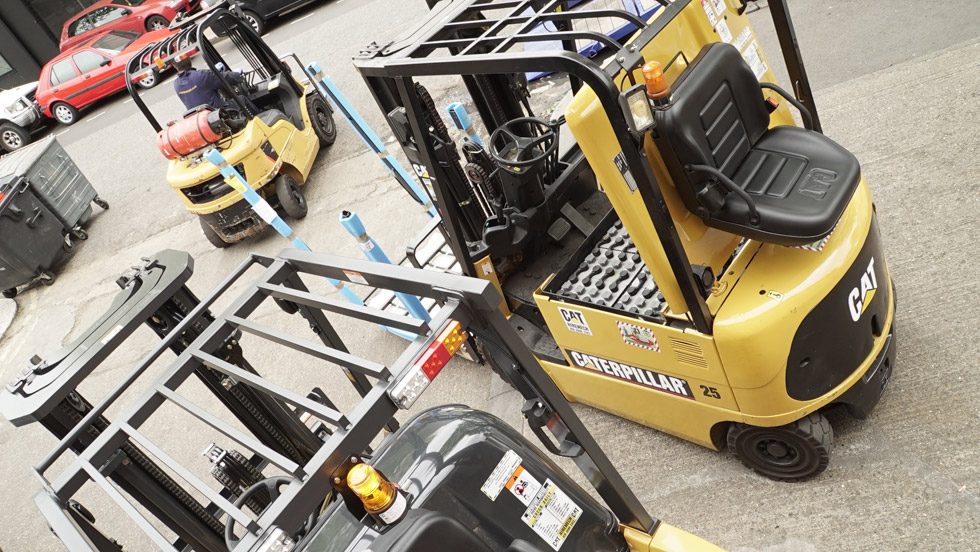Using the Right Tools- 3 Wheel Forklift or Pallet Trucks
Using the right tools for the job in hand is important in terms of getting the best efficiency. Lifting heavy loads with a mechanical lifting aid is no different, and it is here where users need to consider whether the right tool for the job in question is a pallet truck or a 3-wheeled counterbalance forklift truck.
Let’s begin by taking a look at the typical characteristics of a counterbalance forklift truck:
The Counterbalance Forklift Truck in general
The type of forklift truck most commonly used in industry across the board is the counterbalance forklift truck. On this type of truck, the lifting forks that carry the load are situated in front of the driver, protruding from the front of the truck.
Basic counterbalance forklifts do not have any out-rigging legs or arms fitted, and this enables the truck to be driven up to the load and positioned exactly where required. In terms of propulsion, counterbalance forklift trucks can be powered by diesel, electric or gas.
As the name indicates, counterbalance forklift trucks are fitted with a counterbalance weight. This weight is incorporated at the rear of the truck to offset the load that is lifted and carried by the forks at the front.
3-Wheel Counterbalance Forklift Trucks
Ordinary counterbalance forklift trucks normally have four wheels; one at each corner of the truck. However, for increased manoeuvrability, counterbalance trucks are also available with only 3 wheels in a triangular configuration. The provision of a singular drive wheel or steering wheel at the centre of the back of the truck gives them far greater manoeuvrability.
Pallet Trucks
Pallet trucks can be either powered or unpowered. The unpowered variants are usually referred to as hand pallet trucks or pump trucks. They are capable of handling loads of up to 3,500 Kg. Typically they have four wheels; two mounted inline, inside each of the forks.
To operate, the operator simply manoeuvres and slides the forks under the load (usually palletised), and once in position then pumps the steering handle which then hydraulically lifts the load clear of the floor, allowing it to be transported into the desired position or location.
Powered Pallet Trucks
Powered pallet trucks work on exactly the same principle as unpowered, except they have an inbuilt electric motor (battery powered) to assist with both the movement of the pallet and the lifting of the load.
Choosing the Right Kit for the job
The two most important factors to be considered when planning a lift and deciding which lifting aid to use – the pallet truck or the 3-wheel counterbalance forklift truck – are the height that the load is to be picked up from, the height at which it is to be delivered, and the speed of the operation.
Pallet trucks are ideal where the loads are only ever to be lifted from and delivered back to floor level. The clearance when a load is lifted is minimal, so another important thing to be considered is the evenness of the floor surface.
If loads are being picked up from outside a curtain sided trailer, for example, only a counterbalance forklift truck will suffice. This also applies where loads are to be stored away at height, on shelving.
The speed of operation is also important, typically where time is an important factor. Pallet trucks are confined in speed to the walking pace of the operator, whereas counterbalance forklift trucks can travel at significantly faster speeds.
In terms of manoeuvrability, pallet trucks are limited by the fact that they run on four wheels whereas a 3-wheel counterbalance forklift truck runs on only three and is, therefore, easier to manoeuvre.

 020 8880 3322
020 8880 3322